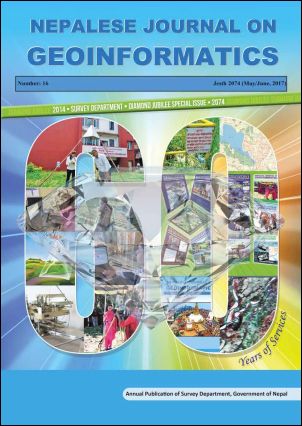Roadmap for Re-establishment of Geospatial Relationship of the Control Points and Features in Nepal due to Gorkha Earthquake 2015
DOI:
https://doi.org/10.3126/njg.v16i1.51408Keywords:
Geospatial Relationship, Control Points, Topographical Features, Earthquake, Change DetectionAbstract
Occurrence of earthquake in Nepal is obvious as it lies in earthquake prone zone. Amount of destruction caused by an earthquake will depend upon the magnitude of the earthquake and the strength of the infrastructures. On 25th April 2015, Nepalese people experienced a huge earthquake of magnitude 7.6 in Richter scale. The earthquake destroyed and damaged a noticeable amount of human lives and infrastructures due to which spatial relationship between points of the affected area were disturbed. The disturbance of the relationship was assessed by some of the case studies in the area. Therefore, it is necessary to re-establish the spatial relationship in the existing database for making use in reconstruction phase of the earthquake and for designing and implementation of development projects in future. The suitable methods for performing this activity are adopting modern technologies such as Global Positioning System (GPS), Remote Sensing method, and modern field survey method using Total Station Theodolite. Therefore, a roadmap needs to be designed to retain spatial relationship with respect to the adjusted coordinate of control points and update the database of the country.




